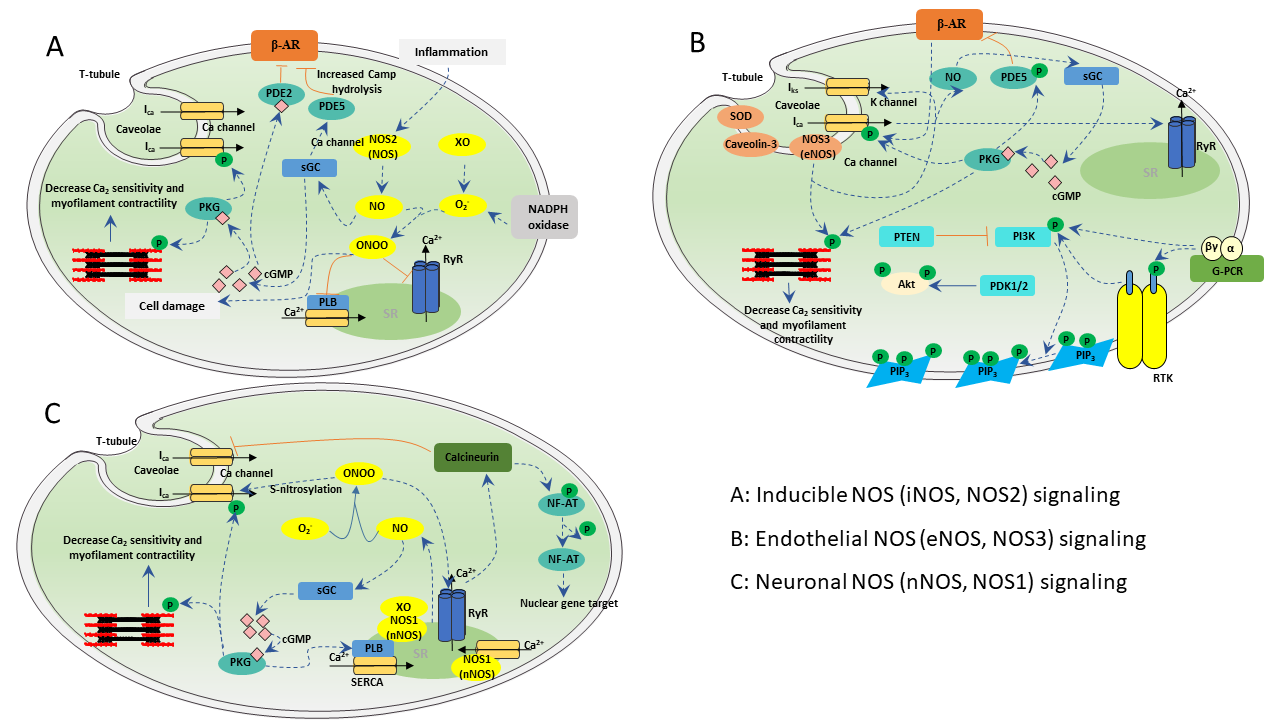
What Is Nitric Oxide?
Nitric oxide (NO), a small molecule with a simple structure, is an extremely unstable gaseous free radical. It is soluble in both aqueous and lipid media so that it can rapidly diffuse through biofilms. And it has a short half-life of only a few seconds in vivo.
NO is widespread in various tissues especially in nervous tissues in mammals. And NO is one of the productions of the oxidation of L-arginine by nitric oxide synthase (NOS). It is a novel biological messenger molecule and plays an important role in the regulation of cardiovascular & cerebrovascular, nerve, and immunity. And it was selected as a "star molecule" by Science magazine in 1992.
What Is Nitric Oxide Signaling?
Nitric oxide signaling mainly refers to the processes by which NO exerts multiple biological functions through autocrine and paracrine signaling pathways.
The Function of Nitric Oxide Signaling
Nitric oxide signaling mediates multiple biological processes by which NO acts as a signal transducer to exert diverse functions including immune responses, the regulation of vascular tone and neurotransmission, anti-tumor and anti-pathogenic.
Nitric Oxide Signaling pathway
As a small inorganic molecule with hydrophilic and lipophilic properties, NO is an important player in many physiological processes. At present, the NO signaling pathway in the cardiovascular system has been best studied.
When Ach stimulates vascular endothelial cells, the surface Ach receptor (GPCR) is activated. GPCR activation activates phospholipase C (PLC), which catalyzes the production of IP3. IP3 diffuses into the cytoplasm and acts on the IP3-gated Ca2+ channel in the endoplasmic reticulum, promoting the release of Ca2+ in the endoplasmic reticulum. The released Ca2+ binds to calmodulin (CaM) to form Ca2+-CaM complex, which reactivates NO synthase (eNOS) in endothelial cells. At the catalytic action of NOS, a substantial of NO is made. NO diffuses into vascular smooth muscle cells adjacent to the endothelial cells where it binds to and activates soluble guanylate cyclase (sGC). Active sGC catalyzes the dephosphorylation of GTP to cGMP. cGMP further activates cGMP-dependent kinase G (PKG). Active PKG phosphorylates myosin light chain phosphatase (MLCP), which dephosphorylates the light chain of myosin, leading to smooth muscle relaxation.
PKG plays a central regulatory role in the signal pathway above. Except for direct stimulation for eNOS to produce NO, PKG also activates CaM by inhibiting Ca2+ entry. Active CaM evokes eNOS. Feedback regulation of sGC and activation of PDE5 by PKG increase the hydrolysis of cGMP, reducing the concentration of cGMP. In addition to its role in the cardiovascular system, NO is involved in the regulation of many processes, most notably in the nervous system. It may act as a reverse transmitter in long-term enhancement in terms of learning and memory. Although the process of NO participation has been understood quite a lot, many details are still not completely clear, and its role in many aspects is not clear, such as immunity, nerve, vision and so on. Therefore, there is still much work to be done on the NO signal network.
Diseases Associated with Nitric Oxide Abnormalities
When NO production is impaired or its bioavailability is reduced, some symptoms such as coronary vasospasm, elevated systemic vascular resistance, hypertension, thrombosis, vascular hypertrophy, and stenosis follow. These symptoms subsequently may develop into diseases like hypertension, diabetes, heart failure, atherosclerosis, etc. Sustained levels of NO production cause tissue toxicity and the vascular collapse associated with septic shock.
Based on the knowledge of the NO signaling pathway, many drugs have been developed, such as Sildenafil for erectile dysfunction and pulmonary arterial hypertension (PAH).





